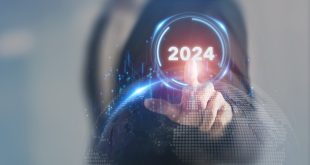The advent of 5G technology marks a significant leap forward in mobile and wireless communication. Promising faster speeds, lower latency, and greater capacity, 5G is poised to revolutionize the way we connect and interact with the world. This article will explain what 5G technology is and explore its potential to transform various aspects of our lives.
What is 5G Technology?
5G stands for the fifth generation of mobile network technology. It builds upon previous generations (1G, 2G, 3G, and 4G) and introduces several key advancements:
- Faster Speeds: 5G offers significantly higher data transfer rates compared to 4G, with speeds potentially exceeding 10 Gbps. This allows for rapid downloading and streaming of high-definition content.
- Lower Latency: Latency refers to the delay between sending and receiving data. 5G reduces latency to as low as 1 millisecond, enabling near-instantaneous communication, which is crucial for applications like autonomous driving and real-time gaming.
- Increased Capacity: 5G networks can support a much larger number of devices per square kilometer, making it ideal for densely populated areas and the growing Internet of Things (IoT).
- Enhanced Reliability: 5G aims to provide more consistent and reliable connections, even in challenging environments like crowded stadiums or urban areas with high interference.
How 5G Works
5G technology utilizes a combination of new radio frequencies and advanced network architecture. Key components include:
- Millimeter Waves: 5G uses higher frequency bands, known as millimeter waves, which provide more bandwidth and faster speeds. However, these waves have shorter ranges and are more susceptible to obstacles like buildings and trees.
- Small Cells: To overcome the limitations of millimeter waves, 5G networks deploy small cell technology. These are low-powered base stations placed closer together than traditional cell towers, enhancing coverage and capacity.
- Massive MIMO: Multiple Input Multiple Output (MIMO) technology uses numerous antennas to send and receive more data simultaneously. Massive MIMO involves large arrays of antennas, significantly increasing network efficiency and speed.
- Beamforming: This technique directs wireless signals to specific devices rather than broadcasting in all directions. Beamforming improves signal strength and reduces interference, enhancing overall network performance.
The Impact of 5G on Connectivity
5G technology is set to revolutionize various industries and aspects of daily life. Here are some key areas where 5G will make a significant impact:
- Enhanced Mobile Experience: Faster download and upload speeds will improve the quality of video streaming, gaming, and other data-intensive applications on mobile devices. Users will enjoy smoother, high-definition experiences with minimal buffering.
- Smart Cities: 5G will enable the development of smart cities, where interconnected devices and sensors optimize traffic management, energy use, public safety, and more. Real-time data collection and analysis will improve urban living conditions and efficiency.
- Healthcare: The low latency and high reliability of 5G will facilitate telemedicine, remote surgeries, and real-time monitoring of patients. Wearable devices and sensors will provide continuous health data, allowing for timely interventions and personalized care.
- Autonomous Vehicles: Self-driving cars require fast, reliable communication to navigate safely. 5G will support vehicle-to-vehicle (V2V) and vehicle-to-infrastructure (V2I) communication, enabling real-time updates on traffic conditions, hazards, and more.
- Industrial Automation: 5G will drive the next wave of industrial automation by connecting robots, machinery, and sensors in real-time. This will enhance manufacturing efficiency, reduce downtime, and improve safety in industries like manufacturing, logistics, and agriculture.
- Augmented and Virtual Reality (AR/VR): The high bandwidth and low latency of 5G will enable immersive AR and VR experiences. This will transform entertainment, education, training, and remote collaboration, making these technologies more accessible and practical.
Challenges and Considerations
While 5G promises numerous benefits, there are challenges to its widespread adoption:
- Infrastructure Development: Building the necessary infrastructure for 5G, including small cells and fiber optic networks, requires significant investment and time.
- Spectrum Allocation: Governments need to allocate appropriate frequency bands for 5G use, which can be a complex and contentious process.
- Device Compatibility: Consumers will need 5G-compatible devices to take full advantage of the new network capabilities, which may involve upgrading their current hardware.
- Security and Privacy: The increased connectivity and data flow associated with 5G raise concerns about cybersecurity and privacy. Robust measures will be needed to protect users and networks.
Conclusion
5G technology is set to transform the way we connect, offering unprecedented speed, reliability, and capacity. Its impact will be felt across various sectors, from healthcare and transportation to entertainment and industrial automation. While challenges remain, the potential benefits of 5G make it a critical development in the evolution of communication technology. As 5G networks continue to roll out globally, we can look forward to a more connected and innovative future.
 KKK14TV
KKK14TV



